 W
WThe United States Armed Forces awards and decorations are primarily the medals, service ribbons, and specific badges which recognize military service and personal accomplishments while a member of the U.S. Armed Forces. Such awards are a means to outwardly display the highlights of a service member's career.
 W
WThe Presidential Inauguration Support Ribbon is the United States National Guard military decoration awarded to National Guardsmen who support U.S. Presidential Inaugurations and meet certain criteria. It was first awarded following the inauguration of President Joe Biden in 2021.
 W
WThe Air Medal (AM) is a military decoration of the United States Armed Forces. It was created in 1942 and is awarded for single acts of heroism or meritorious achievement while participating in aerial flight.
 W
WThe American Defense Service Medal was a military award of the United States Armed Forces, established by Executive Order 8808, by President Franklin D. Roosevelt, on June 28, 1941. The medal was intended to recognize those military service members who had served on active duty between September 8, 1939, and December 7, 1941.
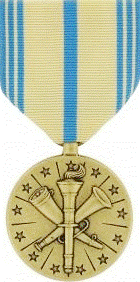 W
WThe Armed Forces Reserve Medal (AFRM) is a service medal of the United States Armed Forces that has existed since 1950. The medal recognizes service performed by members of the reserve components and is awarded to both officers and enlisted personnel. The medal is considered a successor award to the Naval Reserve Medal and the Marine Corps Reserve Ribbon, which were discontinued in 1958 and 1967, respectively.
 W
WCampaign streamers are decorations attached to military flags to recognize particular achievements or events of a military unit or service. Attached to the headpiece of the assigned flag, the streamer often is an inscribed ribbon with the name and date denoting participation in a particular battle, military campaign, or theater of war; the ribbon's colors are chosen accordingly and frequently match an associated campaign medal or ribbon bar. They often are physical manifestations of battle honours, though this does not mean all streamers are battle honours. They should not be confused with a tassel, which is usually purely decorative in nature.
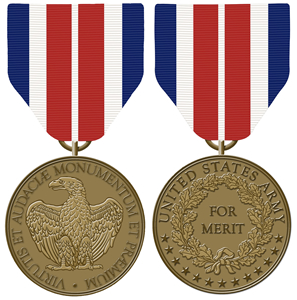 W
WThe Certificate of Merit Medal was a military decoration of the United States Army that was issued between the years of 1905 and 1918. The Certificate of Merit Medal replaced the much older Certificate of Merit which was authorized by the United States Congress on March 3, 1847.
 W
WCombat Pin for Civilian Service (CPCS) Is a combat service recognition decoration awarded to U.S. Army Corps of Engineers (USACE) civilian employees. The Gulf Region CPCS is a lapel pin designed after the Army Corps of Engineer's Gulf Region Division (GRD) logo. The Afghanistan Region CPCS is modeled after the Afghanistan District (AED) logo.
The Department of the Army Civilian Service Achievement Medal is awarded for noteworthy achievements that are of a lesser degree than those recognized by the Commander's Award for Civilian Service. It was approved by the Army Chief of Staff, on 24 August 1987. It is the fifth highest award in the Department of the Army Honorary Awards scheme for Department of the Army employees, ranking just below the Commander's Award for Civilian Service. It consists of a medal, lapel pin, and certificate.
 W
WThe Distinguished Flying Cross (DFC) is a military decoration of the United States Armed Forces. The medal was established on July 2, 1926, and is currently awarded to any persons who, after April 6, 1917, distinguish themselves by single acts of heroism or extraordinary achievement while participating in aerial flight. Both heroism and extraordinary achievement are entirely distinctive, involving operations that are not routine. The medal may be awarded to friendly foreign military members in ranks equivalent to U.S. Pay Grade of O-6 and below, in actual combat in support operations.
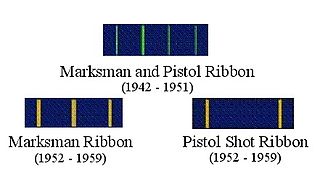 W
WThe Distinguished Marksmanship Ribbon was a United States Navy military award which was established in 1942 as the Distinguished Marksman and Pistol Shot Ribbon. The ribbon recognized those who had been presented a Distinguished Marksman Badge through exceptional scoring at a professional military shooting competition. The Distinguished Marksman and Pistol Shot Ribbon was issued for receipt of either a Rifle or Pistol Distinguished Marksman Badge.
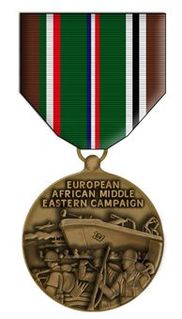 W
WThe European–African–Middle Eastern Campaign Medal is a military award of the United States Armed Forces which was first created on November 6, 1942 by Executive Order 9265 issued by President Franklin D. Roosevelt The medal was intended to recognize those military service members who had performed military duty in the European Theater during the years of the Second World War.
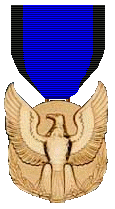 W
WThe Four Chaplains' Medal, not to be confused with the The Four Chaplains Medal, a regimental award for excellence in service for an achievement being named in the honor of the former, was a decoration approved by an Act of Congress on July 14, 1960. The decoration recognizes the heroic actions of four Army Chaplains during World War II.
 W
WThe Good Conduct Medal is one of the oldest military awards of the United States Armed Forces. The U.S. Navy's variant of the Good Conduct Medal was established in 1869, the Marine Corps version in 1896, the Coast Guard version in 1923, the Army version in 1941, and the Air Force version in 1963; the Air Force Good Conduct Medal was temporarily discontinued from February 2006 to February 2009, followed by its subsequent reinstatement.
 W
WThe Artillery Order of Molly Pitcher is bestowed by the U.S. Field Artillery Association (USFAA) and the Air Defense Artillery Association (ADAA) to recognize women who have voluntarily contributed in a significant way to the improvement of the U.S. Field Artillery or Air Defense Artillery Communities. The award is named after Molly Pitcher who distinguished herself during the American revolutionary war.
 W
WThe Knox Trophy is the oldest military award of the United States Military Academy at West Point. The award was established on October 8, 1910 and is given annually by the Sons of the Revolution in the State of New York to the United States Military Academy cadet with the highest rating for military efficiency. Named in honor of General Henry Knox, the first Secretary of War, the original trophy, made by Tiffany & Company was originally kept on display in the office of the West Point Commandant.
 W
WThe Legion of Merit (LOM) is a military award of the United States Armed Forces that is given for exceptionally meritorious conduct in the performance of outstanding services and achievements. The decoration is issued to members of the eight uniformed services of the United States as well as to military and political figures of foreign governments.
 W
WThe United States Navy Memorial presents a Lone Sailor Award to Sea Service veterans who have excelled with distinction in their respective careers during or after their service. The award recipients will join a list of men and women who have distinguished themselves by drawing upon their military experience to become successful in their subsequent careers and lives, while exemplifying the core values of Honor, Courage and Commitment. The Lone Sailor Award has been given out each year since the Navy Memorial was dedicated in 1987.
 W
WThe Marine Corps Expeditionary Medal is a military award of the United States Marine Corps. It was established on 8 May 1919 as the Marine Corps Expeditionary Ribbon. A full-sized medal was authorized on 1 March 1921. The Marine Corps Expeditionary Medal is therefore one of the oldest medals of the United States military which is still issued to active duty personnel.
 W
WIn the United States (U.S.), a marksmanship badge is a U.S. military badge or a civilian badge which is awarded to personnel upon successful completion of a weapons qualification course or high achievement in an official marksmanship competition. The U.S. Army and the U.S. Marine Corps are the only military services that award marksmanship qualification badges. However, marksmanship medals and/or marksmanship ribbons are awarded by the U.S. Navy, U.S. Coast Guard, and U.S. Air Force for weapons qualifications. For non-military personnel, different U.S. law enforcement organizations and the National Rifle Association (NRA) award marksmanship qualification badges to those involved in law enforcement. Additionally, the Civilian Marksmanship Program (CMP) and the NRA award marksmanship qualification badges to U.S. civilians. Most of these organizations and the U.S. National Guard award marksmanship competition badges to the people they support who succeed in official competitions.
 W
WA Marksmanship Ribbon device is primarily a miniature metal rifle, pistol, target, service star, or letter E or S which may be worn if authorized on a Marksmanship Ribbon awarded to members of the United States Coast Guard, United States Air Force, and United States Navy.
 W
WThe Marksmanship Medal is a United States Navy and the U.S. Coast Guard military award and is the highest award one may receive for weapons qualification. The Marksmanship Medal is the equivalent of the Expert Marksmanship Badge in the U.S. Army and U.S. Marine Corps. Additionally, select State National Guard organizations award marksmanship medals to guardsmen who achieve some of the highest aggregate scores at state-level marksmanship competitions.
 W
WA marksmanship ribbon is a United States Navy, Air Force, and Coast Guard award that is issued to its members who pass a weapons qualification course and achieve an above-average score. Additionally, there are select state National Guard organizations that award marksmanship ribbons for high placement in state-level marksmanship competitions.
 W
WThe Meritorious Service Medal (MSM) is a military award presented to members of the United States Armed Forces who distinguished themselves by outstanding meritorious achievement or service to the United States subsequent to January 16, 1969.
 W
WThe Military Outstanding Volunteer Service Medal (MOVSM) is a military award which was created under Executive Order 12830 by George H. W. Bush on January 9, 1993. The medal was designed by the Institute of Heraldry and was first issued in December 1993.
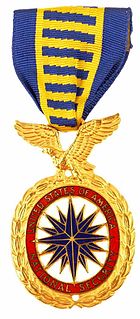 W
WThe National Security Medal is a decoration of the United States of America officially established by President Harry S. Truman in Executive Order 10431 of January 19, 1953. The medal was originally awarded to any person, without regard to nationality, for distinguished achievement or outstanding contribution on or after July 26, 1947, in the field of intelligence relating to the national security of the United States.
 W
WThe Naval Reserve Medal is a decoration of the United States Navy which was created by order of Secretary of the Navy Claude A. Swanson on 12 September 1938. The medal was first issued in 1938 and was an active award until 1958. On 12 September 1958, the Naval Reserve Medal was declared discontinued and was replaced by the Armed Forces Reserve Medal. It is not to be confused with the Naval Reserve Meritorious Service Medal which is a different award that was discontinued on 1 January 2014.
 W
WThe Navy and Marine Corps Medal is the highest non-combat decoration awarded for heroism by the United States Department of the Navy to members of the United States Navy and United States Marine Corps. The medal was established by an act of Congress on 7 August 1942, and is authorized under 10 U.S.C. § 6246.
 W
WThe Navy Cross is the United States Navy and United States Marine Corps' second-highest military decoration awarded for sailors and marines who distinguish themselves for extraordinary heroism in combat with an armed enemy force. The medal is equivalent to the Army's Distinguished Service Cross, the Air Force and Space Force's Air Force Cross, and the Coast Guard Cross.
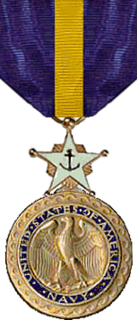 W
WThe Navy Distinguished Service Medal is a military decoration of the United States Navy and United States Marine Corps which was first created in 1919 and is presented to sailors and Marines to recognize distinguished and exceptionally meritorious service to the United States while serving in a duty or position of great responsibility.
 W
WThe Navy Expeditionary Medal is a military award of the United States Navy which was established in August 1936.
 W
WThe Nisei Soldiers of World War II Congressional Gold Medal is an award made for the Japanese American World War II veterans of the 100th Infantry Battalion, the 442nd Regimental Combat Team and the Military Intelligence Service. The Congressional Gold Medal is the most prestigious award given to civilians in the United States for achievements and contributions. The medal was approved by Congress under Public Law 111–254 in 2010 to honor the Japanese Americans who had served in the war. It was collectively presented on November 2, 2011.
 W
WThe Omaha Trophy, which is sponsored by the United States Strategic Command (STRATCOM) and the STRATCOM Consultation Committee, is awarded each year to U.S. military units with intercontinental ballistic missiles, strategic aircraft, strategic space and information operations, as well as to the best ballistic missile submarine. The trophy is currently presented in five official categories:Global Operations Intercontinental Ballistic Missile Strategic Aircraft Operations Strategic Bomber Operations Submarine Ballistic Missile
 W
WThe Prisoner of War Medal is a military award of the United States Armed Forces which was authorized by Congress and signed into law by President Ronald Reagan on 8 November 1985. The United States Code citation for the POW Medal statute is 10 U.S.C. § 1128.
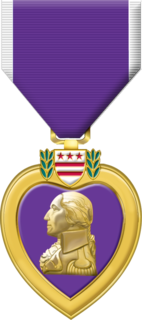 W
WThe Purple Heart (PH) is a United States military decoration awarded in the name of the President to those wounded or killed while serving, on or after April 5, 1917, with the U.S. military. With its forerunner, the Badge of Military Merit, which took the form of a heart made of purple cloth, the Purple Heart is the oldest military award still given to U.S. military members – the only earlier award being the obsolete Fidelity Medallion. The National Purple Heart Hall of Honor is located in New Windsor, New York.
 W
WA Reserve Good Conduct Medal refers to any one of the five military conduct awards, four of which are currently issued and one of which was previously issued, by the United States Armed Forces to enlisted members of the Reserve and National Guard. The primary difference between the regular Good Conduct Medal and the Reserve Good Conduct Medal is that the regular Good Conduct Medal is only issued for active duty service while the reserve equivalent is bestowed for reserve duties such as drills, annual training, and additional active duty for either training or operational support to the active duty force or, in the case of the Army National Guard and Air National Guard, in support of Title 32 U.S.C. state active duty (SAD) such as disaster response and relief.
 W
WThe Silver Star Medal (SSM) is the United States Armed Forces' third-highest military decoration for valor in combat. The Silver Star Medal is awarded primarily to members of the United States Armed Forces for gallantry in action against an enemy of the United States.
 W
WThe Spirit of Hope Award is a United States military award presented by the Department of Defense. The award was created based on the contributions of entertainer Bob Hope to members of the military, and is annually awarded to individuals or organizations whose work benefits the quality of life of service members and their families.
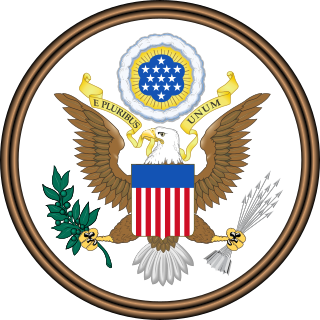 W
WThe Stolen Valor Act of 2005, signed into law by President George W. Bush on December 20, 2006, was a U.S. law that broadened the provisions of previous U.S. law addressing the unauthorized wear, manufacture, or sale of any military decorations and medals. The law made it a federal misdemeanor to falsely represent oneself as having received any U.S. military decoration or medal. If convicted, defendants might have been imprisoned for up to six months, unless the decoration lied about is the Medal of Honor, in which case imprisonment could have been up to one year. In United States v. Alvarez (2012), the Supreme Court of the United States ruled that the Stolen Valor Act of 2005 was an unconstitutional abridgment of the freedom of speech under the First Amendment–striking down the law in a 6 to 3 decision.
 W
WThe Stolen Valor Act of 2013 is a United States federal law that was passed by the 113th United States Congress. The law amends the federal criminal code to make it a crime for a person to fraudulently claim having received a valor award specified in the Act, with the intention of obtaining money, property, or other tangible benefit by convincing another that he or she received the award.
 W
WThe Transportation 9-11 Medal is a special decoration of the U.S. Department of Transportation which was first created in 2002. The decoration recognizes those civilians and members of the military who performed heroic deeds and valorous accomplishments in the immediate aftermath of the September 11, 2001 attacks on the United States of America.
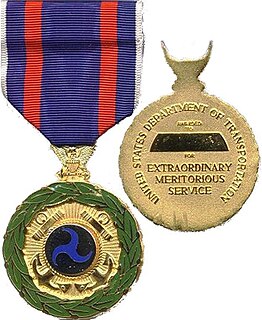 W
WThe Transportation Distinguished Service Medal was the highest decoration which could be bestowed by the Secretary of Transportation for exceptional service to the United States government in a position of great responsibility to a member of the United States Coast Guard. In 2003 it was replaced by the Homeland Security Distinguished Service Medal.
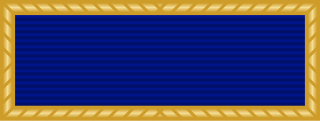 W
WThe Presidential Unit Citation (PUC), originally called the Distinguished Unit Citation, is awarded to units of the uniformed services of the United States, and those of allied countries, for extraordinary heroism in action against an armed enemy on or after 7 December 1941. The unit must display such gallantry, determination, and esprit de corps in accomplishing its mission under extremely difficult and hazardous conditions so as to set it apart from and above other units participating in the same campaign.
 W
WThe United States Antarctic Expedition Medal is a combined military-civilian award that was authorized by the United States Congress on September 24, 1945 under Public Law 185 of the 79th Congress. The award recognizes members of the United States Antarctic Expedition of 1939–1941. There were gold, silver, and bronze versions. It is unclear if the gold version is considered a Congressional Gold Medal, as was the case with the 1st Byrd expedition.